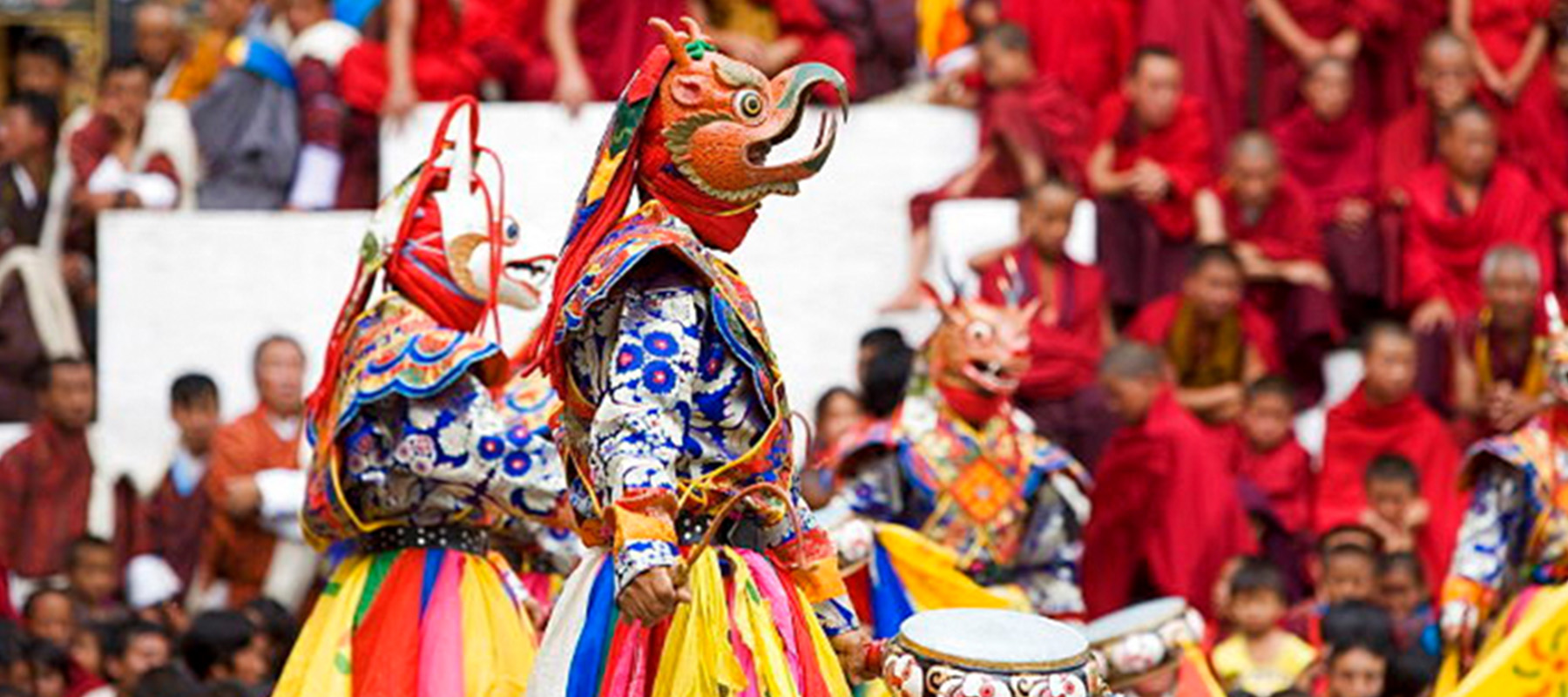One of Bhutan’s largest festivals is the Thimphu Tshechu, celebrated over three days starting on the 10th day of the 8th month of the lunar calendar. Established by the 4th Temporal Ruler, Tenzing Rabgye, in 1670, this festival honors Guru Rinpoche and is held in the courtyard of Tashichhodzong. Known for its vibrant displays, the Thimphu Tshechu attracts thousands of visitors from surrounding districts. Preceding the festival are days of prayers and rituals to invoke divine blessings. The event is both a religious observance and a social gathering where attendees don elaborate attire. Originally featuring only a few dances performed by monks, the festival evolved in the 1950s under King Jigme Dorji Wangchuck to include Boed Chhams (mask dances by lay monks), adding diversity and colour while maintaining its spiritual essence. Mask dances like Guru Tshengye and Shaw Shachi are highlights, and the Atsaras, or ritual clowns, play a role in safeguarding the event. For farmers, the festival offers a welcome respite from farm life, celebrating blessings, health, and happiness.
Thimphu Tsechu ( 13-15 September )


